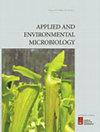摘要
硫酸盐还原菌(SRB)具有多方面的新陈代谢适应性,受 pH 值波动的影响很大,而 pH 值波动在生物地球化学循环中起着至关重要的作用。在这项研究中,我们使用了一种模式 SRB--阿拉斯加 Oleidesulfovibrio G20--来确定 pH 值变化(pH 值 6、7 和 8)对生长动力学和代谢基因表达的时间影响。pH 6(0.014 h-1)时的特定生长率与 pH 7(0.016 h-1)时的生长率接近,而 pH 8 时的生长率较低(0.010 h-1)。乳酸盐消耗量在 pH 值为 7 时达到峰值(0.35 mM lactate.h-1),在 pH 值为 8 时下降(0.09 mM lactate.h-1)。在酸性和碱性条件下都有明显的氢气产生。基因表达研究表明,ATP 酶起着质子泵的作用,而氢酶则介导质子到氢的可逆转换。硫酸盐和能量代谢充当电子受体和供体,而氨基酸合成则调节碱性和酸性氨基酸,以减轻 pH 压力。在 pH 值为 6 时,FtsZ 的下调表明分裂能力受损,这与稍长的长度(约 2 微米)有关,而在 pH 值为 8 时,分裂体蛋白的上调表明分裂过程有效,这与较短的长度(约 1.8 微米)有关。这项研究将有助于在极端 pH 值的环境中使用 O. alaskensis G20,提高其在优化生物修复和厌氧消化过程中的有效性:硫酸盐还原菌(SRB)在全球硫和碳循环中发挥着重要作用,对于生物修复和厌氧消化过程至关重要。然而,有关 SRB 在不同 pH 值条件下的基因型和表型反应的详细研究十分有限。本研究通过考察阿拉斯加油脂硫弧菌 G20 的 pH 依赖性遗传和代谢适应性,揭示了调节氢酶和 ATP 酶活性、细胞分裂以及胞外聚合物形成的关键机制,从而填补了这一空白。这些发现为了解 SRB 如何维持 pH 平衡提供了新的视角,展示了它们在酸性和碱性环境中生存和发挥作用的能力。此外,这项研究还揭示了关键的遗传和表型特征,这些特征将直接有助于设计工业废水管理系统、生物修复和溶解重金属回收。通过阐明 O. alaskensis G20 对不同 pH 值环境的动态响应,该研究为提高基于 SRB 的系统的复原力和性能奠定了基础,为改进环境和工业应用铺平了道路。Sulfate-reducing bacteria (SRB) exhibit versatile metabolic adaptability with significant flexibility influenced by pH fluctuations, which play a critical role in biogeochemical cycles. In this study, we used a model SRB, Oleidesulfovibrio alaskensis G20, to determine the temporal effects of pH variations (pH 6, 7, and 8) on both growth dynamics and metabolic gene expressions. The specific growth rate at pH 6 (0.014 h-1) closely matched that at pH 7 (0.016 h-1), while pH 8 exhibited a lower growth rate (0.010 h-1). Lactate consumption peaked at pH 7 (0.35 mM lactate.h-1) and declined at pH 8 (0.09 mM lactate.h-1). Significant hydrogen production was evident under both acidic and alkaline conditions. Gene expression studies revealed that ATPases function as proton pumps, while hydrogenases mediate reversible proton-to-hydrogen conversion. Sulfate and energy metabolism act as electron acceptors and donors, while amino acid synthesis regulates basic and acidic amino acids to mitigate pH stress. Downregulation of FtsZ at pH 6 suggests impaired division, correlating with slightly longer lengths (~2 µm), while upregulation of divisome proteins at pH 8 suggests efficient division processes, aligning with shorter lengths (~1.8 µm). This study will facilitate the employment of O. alaskensis G20 in extreme pH environments, enhancing its effectiveness in optimizing bioremediation and anaerobic digestion processes.
Importance: Sulfate-reducing bacteria (SRB) play essential roles in global sulfur and carbon cycling and are critical for bioremediation and anaerobic digestion processes. However, detailed studies on the genotypic and phenotypic responses of SRB under varying pH conditions are limited. This study addresses this gap by examining the pH-dependent genetic and metabolic adaptations of Oleidesulfovibrio alaskensis G20, revealing key mechanisms regulating hydrogenase and ATPase activities, cell division, and extracellular polymeric substance formation. These findings provide new insights into how SRB maintains pH homeostasis, showcasing their ability to survive and function in both acidic and alkaline environments. Furthermore, this study reveals critical genetic and phenotypic characteristics that will directly aid to engineer industrial effluent management systems, bioremediation, and dissolved heavy metal recovery. By elucidating the dynamic response of O. alaskensis G20 to varied pH environments, the research provides a foundation for enhancing the resilience and performance of SRB-based systems, paving the way for improved environmental and industrial applications.

 求助内容:
求助内容: 应助结果提醒方式:
应助结果提醒方式:


